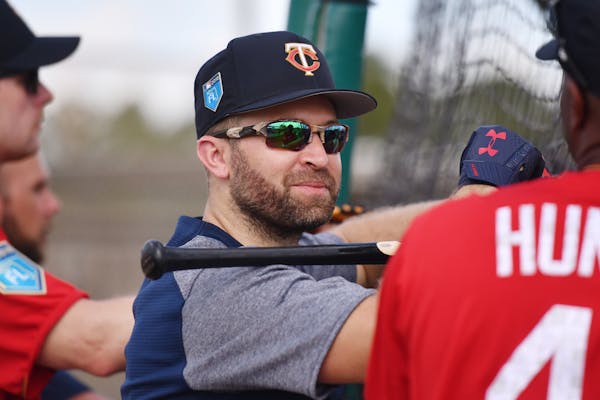FORT MYERS, FLA. – It is Oct. 4, 2017. You are the Twins' new front office. Your team has just capped a remarkable season with an unremarkable ending, a loss at Yankee Stadium.
You are not distraught. You did not expect your first team to win 85 games. You are pleasantly surprised, and impressed by the young talent that your predecessor assembled. You also know that you have work to do.
So you scratch out a task list.
Kidding.
You love technology. You send a virtual task list that will hover like a hologram in front of the retinas of all of your key employees all winter.
It reads:
1. Re-sign Paul Molitor.
2. Build a safety net for your young bullpen.
3. Find a reasonably priced bat that can improve your lineup at DH, and provide insurance in case Miguel Sano isn't reliable or Joe Mauer isn't healthy.
4. Improve and deepen your rotation.
5. Fight the urge to rush into expensive deals. Sign or trade for players who will help immediately but will not destroy your financial flexibility two or three years from now.
The deal with Molitor doesn't take long. He was easy to work with all season and made the decision for you by steadily guiding the team after the trading deadline and, rightly or wrongly, didn't worry about any angst caused by your silence on the matter.
Deals with Fernando Rodney, Addison Reed and Zach Duke aren't all that difficult or expensive, either. All three could buy time for younger relievers to develop, or could become important players.
Signing Logan Morrison accomplishes task No. 3. He becomes an intimidating DH and could become the starting first baseman next year, or could share DH and first base if Mauer returns and Sano is able to remain at third base. You have taken advantage of a market that, as Morrison and Mike Moustakas discovered, doesn't highly value players who hit almost 40 home runs the previous season.
Everyone you have acquired so far has been a bargain, but quality starting pitchers are never bargains.
Unless you have a deep stable of quality shortstops, and the patience to wait for free agents to become desperate.
So you trade your fourth-best shortstop prospect to Tampa Bay for Jake Odorizzi, who may be your Opening Day starter, and on March 10 sign Lance Lynn to a one-year deal worth $12 million.
You now have a team that appears markedly better than the one from a year ago. You are an on-paper contender not just for a wild-card playoff spot but the division title should Cleveland stub a toe or three.
Sit with a general manager in 1993 or 2017, and you may hear the phrase: "There is no such thing as a bad one-year deal.'' This remains true. If Lynn pitches well, he will be considered a bargain. If he pitches poorly, he will have been a short-lived experiment.
Scouts have told me that they wonder if Lynn will pitch well in the American League, and analysts can find flaws in his more esoteric statistical profile.
Allow me to be a Luddite: He's going to pitch a lot of games against the weaker teams in a weak division, he'll be playing for an excellent defensive team, he has a career ERA of 3.38, and has pitched at least 175 innings in each of his five full big-league seasons.
The Twins may now begin the season with a rotation of Odorizzi, Jose Berrios, Lynn and Kyle Gibson, with Ervin Santana supposedly due to return at about the time the team will need five starters.
Adalberto Mejia, Fernando Romero and Stephen Gonsalves become quality depth instead of players the Twins would have to depend on as early as May.
Falvey and Levine have aggressively built a deep, strong team without giving up a top prospect or a long-term contract. They have positioned the 2018 Twins to win without hamstringing any future teams.
This might register as the best Twins offseason since in 1990-91, when Andy MacPhail missed out on signing Mike Boddicker and Kirk Gibson and settled for a couple of bargains named Chili Davis and Jack Morris.

Souhan: This is KAT's chance to prove Flip Saunders was right

Souhan: Why Tiger Woods should keep swinging
Souhan: Scheffler wins Masters again, shows what makes him special
Morikawa falters in final round at Masters


